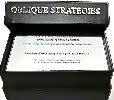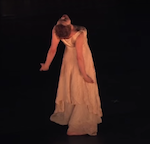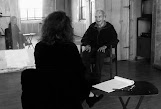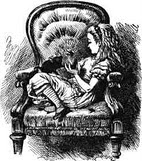"Chance is the dogma, but look deeper."
Carolyn Brown
"If the dancer dances, everything is there. The meaning is there if that's what you want."
Merce Cunningham
 |
| Merce Cunningham with composer Gordon Mumma in St. Paul de Vence, 1966 |
STARTING more than seventy years ago, Merce Cunningham began to change the way people dance and the people see dancing in the same way that Picasso and the cubists changed the way people painted and the way people see painting.
He took dance apart and put it back together again, leaving out all but the most essential. He stripped dance of conventional narrative; he ordered it by change procedures he conceived it without music and without decor. He took it out of the proscenium (but later put it back) and exploded the stage picture into fragments. He made the viewer the auteur. The great irony inherent in all this is that only a great storyteller possessed of extraordinary musicality could have stripped away so much and be left with more. Cunningham was able to separate dance from its traditional trappings not because dance does not need them, but because dance--at least in his hands--already had them.
There has been a lot said and written about Merce Cunningham and John Cage and their working method--most of it said by neither of them. But of all of the odd things people have thought about Cunningham's dances over the years, the oddest--including the notion that the dances are in part or whole improvisational (which of course they are not)--have arisen from his use of chance, the most confusing element of the Cage-Cunningham dogma. To some, its use seems flaky. To others, it implies a certain haphazardness, the evidence of the dances themselves notwithstanding.
Shortly before his death, I asked him this:
"How is it that without music, without narrative, with your use of chance procedures to remove yourself--to keep from imposing your personality on the movement-- that your dances are so passionate?"
And he answered:
FOR AN AUDIENCE, the result of such an approach--non narrative, and at times chance generated-- is freeing, yet demanding. (Still more so for the dancers.) For when is some small way the choices made in making a dance are made not by the choreographer, but by an impersonal agent, or fate, the viewers are temporarily freed from the tyranny of the artist's vision, and released into their own. In other words, the use of chance got Cunningham out of the dance and let us in, just as he had let the musicians into the pit to do what they would, and let various artists and designers superimpose their work on his own. Still, one might do well to remember that the chance procedures only offered answers to questions--How many dancers? Which part of the stage? Which wing to exit? Which foot to begin? and so forth--and these questions were always posed by Cunningham. He was enlarging his own possibilities, not letting the world at large into the work process. But into the seeing process, yes. Those possibilities are generated by the viewers.
According to the Cage-Cunningham dogma, the music and the decor and the dance are things apart--these other artists and their work stand independent of the choreography. But where a trinity is proposed--dance, music, decor--we, the audience, experience unity. Only by extricating a dance from its decor and score will we learn its own story and hear its own music. To see it separately is to see it the way Cunningham made it and probably always saw it. The way to do this sounds like instructions for meditating: You just concentrate on the dance and let everything else fall away.
With few (and these are marvelous) exceptions, Cunningham's dances look best with the simplest settings and costumes, and--though there are those who would argue that the music more than gave the decor a run for its money--it is arguably in the area of decor that the Cunningham repertory was most often hoist by the Cage-Cunningham petard. Their gospel indeed yielded much that was splendid, antic, and beautiful over the years, and yet, also much that was not. Among the artists who designed for the company early on were, in chronological order, Remy Charlip, Robert Rauschenberg, Frank Stella, Jasper Johns, Andy Warhol, Robert Morris, Bruce Nauman, Mark Lancaster, and Morris Graves. During this time, the artistic advisers were successively Rauschenberg, Johns (who told me he took the job not so much that he wanted to but so that " someone else wouldn't do it," and who began the custom of inviting other artists than himself to design), and Lancaster. In 1984, Dove Bradshaw and William Ansastasi were named co-artistic advisers; they were followed, formally undesignated but de facto, by the Merce Cunnningham Dance Company's last executive director, Trevor Carlson.
Because we see their work not merely along with but actually on top of Cunningham's--that is, the dancers wear the costumes--there is a frequent assumption that these artists (however various) and Cunningham shared an aesthetic, when what they actually shared was contemporaneity. But living at the same time and working at the same time doesn't mean thinking in the same way. Actually, Cunningham's painterly motivation, as it were, is previous to his own day, falling much closer to the early Cubists via Marcel Duchamp, whose famous nude always seems to have descended from a landing on which Picasso's Demoiselles d'Avignon (1907) are standing. Indeed, there is a jumping passage in Cunningham's Walkaround Time (1968) I long assumed to be an homage to the nude; only recently did he tell me that in that solo, he was dancing "the bride" in The Large Glass (1915-23), whose elements are deconstructed--and then just before the end of the dance reconstructed--in Johns's decor for the dance. (This led me to realize that the dance is a flipped paradigm of the Duchamp, whose title in French translates as "The Bride Stripped Bare By her Bachelors, Even." With scant dancing for the other men, Walkaround Time is a kind of "Groom Stripped Bare by his Lovelies, Even.") Cunningham's and Duchamp's shared vision has something to do with breaking things up--whether the plans of the canvas or the increments of the dancing phrase. It also involves a passion for showing all of the sides of a thing at once.
| Merce Cunningham and John Cage |
One finds such things in Cunningham's choreography; one finds them in a good deal of modern poetry, starting with T.S. Eliot; and one finds them in James Joyce, whose work was read aloud daily by John Cage, a Joyce adept. Seven titles of Cunningham's dances--the last via a speculation by Joseph Campbell-- are derived from Joyce, in particular Finnegan's Wake. These are In the Name of the Holocaust (1943), Tossed as it is Untroubled (1944), Sounddance (1974), Roaratorio (1984), Beachbirds (1991), and Ocean (1994).
How much more of Cunningham's imagery and in fact his method are Joycean is a fascinating question. The importance of the everyday and a genius for epiphany are but two of the correspondences. Cunningham himself clued us into his affinity, indicating the kind of associative narrative and diction to which he was drawn, and placing himself squarely within the Joycean tradition. This is very far from being within the aesthetic of his most prominent artist collaborators. Cunningham's work is neither abstract, nor expressionist. As he said to me in an interview in 1988:
I have many reference, many images, so in that sense I have no images. because I could just as well substitute one image for another, in the Joycean sense of there being not a symbol but multiple [symbols]--one thing can build on another, or you can suddenly have something--the same thing--being something else....That seems to be the way life is anyway.
Just as the overlapping of dance and decor has led to certain assumptions about Cunningham's dances, so has the separation of dance and music. The dogma has given rise to the notion that the dances are somehow unmusical, or lacking music. In performance, Cunningham's dances usually are accompanied by live music, occasionally by silence. Sometimes (as with some scores of David Tudor) the music is a kind of dense aural fog that forces the viewer to concentrate on the dance the way dusk makes a driver concentrate on the road. [author's note: Both Cunningham and Tudor himself liked this notion, discussed, after I first published it, with each.]
Sometimes, as with Cage's accompaniment for Duets (1980) and Tudor's for Exchange (1978), the sound seems to support the dance. Sometimes, the set, decor, and dance combine with a fantastic unity of impression, as in the iconic Sounddance (1974). Occasionally, the sound suggests natural environments--water, crickety--and occasionally it is so loony and deracinated and overbearing that it diminishes one's experience of the dance. But whatever it is, it is not the experience of the dance, merely the music that happens at the same time.
THE DANCE'S MUSIC CAN BE SEEN BUT NOT HEARD, except in the footfalls of the dancers and their breathing. The dance's music is its rhythm. (Cunningham said to me in an interview that "rhythm is time cut up.") Perhaps the easiest place to see Cunningham rhythm is in his unison sections, and the easiest place to find such sections in the early video works choreographed first for camera, then transferred to the stage. Here one finds the dancers disposed in squads. To see one squad opposed against another is to see two unisons at once: basic Cunningham counterpoint.
Always--on stage, on film, in videos, and in rehearsal--the Merce Cunningham Dance Company seemed to be dancing to something--keeping up with it, slowing down to it--their phrasing exquisite, and driven. By what? Not by any music added in the theater. Not by music at rehearsal--they rehearsed in silence. They are dancing to the sound--or the memory--of Cunningham's own snapping and clapping, and the sounds of their own footfalls and breathing. This is the true music of the dance.
In studio and in the wings, Merce Cunningham worked with a stop watch. He was the White Rabbit ("You're late! You're late!) of choreographers, and in his own way the most musical of all. One could see this when he revived Septet, made in 1953 to Erik Satie's Trois Morceaux en Forme de Poire.
| Barbara Dilley, Carolyn Brown, Merce Cunningham, and Viola Farber in Septet, 1964 |
To see that work was to suspect that for Cunningham, working to music must have been like turning on the radio when the your music player is already on. It interfered with music he already heard--or felt.
In a similar way, using a plot would have interfered with Cunningham's own story telling. It is here that the dogma is most pernicious: that the dances have no obvious narratives or superimposed moods has led to the notion that they tell no stories. Yet study of Cunningham's choreographic notes finds ample evidence of metaphor, and simile, if not overarching plot, and watching the dances opens floodgates of imagery. However, the lack of invented roles and moods has led some viewers to assume that the performers are somehow impersonal. The exact opposite is true. The work is in fact personality-driven, for what could be more personal, more transparent, more poignant than dancers who are always performing as themselves? As Cunningham said to me:
The idea of personality not being there isn't true simply because when the dancers do it, they in doing it take it on--it's like a second skin.
If there have been fads in Cunningham criticism over the years, one was a general trending in the 1980s away from calling the dances "abstract," though that notion would persist and resurface again from time to time, and continues to. But by 1990, the critically correct position was to call them "dramatic," in recognition of some inherent theatricality perceived in the repertory of that time. Cunningham himself, in conversation, often talked about "the theater" instead of "the dance." Generally writers were thinking about the actorly aspect of Cunningham's increasingly Beckettian performances, or referring to the overall "lightness"--as in for example Summerspace (1958), How to Pass Fall Kick and Run (1968), Roadrunners (1979); or "darkness"-- as in Winterbranch (1964), Shards (1987), Quartet (1982). This leaves out the entire category that falls under the rubric "nature studies," in which the tone is calm, sometimes elegiac, sometimes Chekhovian, often magical. And yet in the summer of 1983, Noel Carroll and Sally Banes wrote in Ballet Review, "We don't paraphrase his dances into propositions about the nature of art...nor do we take them to be alchemical allegories."
 |
| Merce Cunningham in "Signals", Paris 1970 ©James Klosty |
IN LATER LIFE, Merce Cunningham would have looked at home with an owl on his shoulder, or one of the rather odd birds he liked to draw. To a later generation, encountering him must have been like meeting Dumbledore, the wizard sage of the Harry Potter series. Then there is this: wizards, T.H. White told us in The Sword in the Stone, travel backwards in time. Certainly you could believe that of Merce Cunningham, timeless, curious, an adapter of new technologies that seemed to encounter a mind already prepared to employ them.
 |
| Merce Cunningham at his desk photo: Mondays with Merce |
Some time after he died, I got an ipad, and the first thing I did was bring up Mondays with Merce on the screen. (The series is available free, on line, 24/7, the title, a reference to a day he taught class, notwithstanding.) I widened the image to fill the device. There was Merce Cunningham, on the palm of my hand, brilliantly clear, via a wireless delivery system more slender than one of his customary Rhodia pocket notebooks. It was amazing. It was as if he had been waiting for that moment. There he was, and here he is still.
"Never trust the teller," said D.H. Lawrence. "Trust the tale."
"Never trust the teller, never trust the tale, trust the telling," amended the poet Richard Howard.
When he was dancing, Merce Cunningham was all three, and the music, too.
With thanks to Lise Friedman, my wonderful longtime editor at Dance Ink.
photo credits: ©James Klosty, with my thanks and gratitude. ©The Merce Cunningham Trust for photos from Mondays with Merce.
©Nancy Dalva 1992, 2012, 2014 All quotations from interviews with Merce Cunningham by Nancy Dalva, except quotation from Carolyn Brown, which is from a panel conversation held at the Fashion Insitute of Technology.
Essay originally commissioned by Patsy Tarr and published in her magazine Dance Ink; and later in Merce Cunningham, Dancing in Time and Space, Richard Kostelanetz, ed.; also published by Stanford University and reproduced at Ohio State University and New York University.
Nancy Dalva is the Merce Cunningham Trust Scholar in Residence.
photo credits: ©James Klosty, with my thanks and gratitude. ©The Merce Cunningham Trust for photos from Mondays with Merce.
©Nancy Dalva 1992, 2012, 2014 All quotations from interviews with Merce Cunningham by Nancy Dalva, except quotation from Carolyn Brown, which is from a panel conversation held at the Fashion Insitute of Technology.
Essay originally commissioned by Patsy Tarr and published in her magazine Dance Ink; and later in Merce Cunningham, Dancing in Time and Space, Richard Kostelanetz, ed.; also published by Stanford University and reproduced at Ohio State University and New York University.
Nancy Dalva is the Merce Cunningham Trust Scholar in Residence.


















